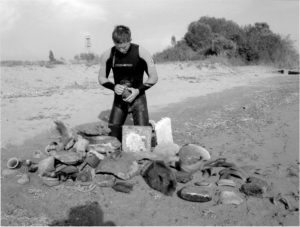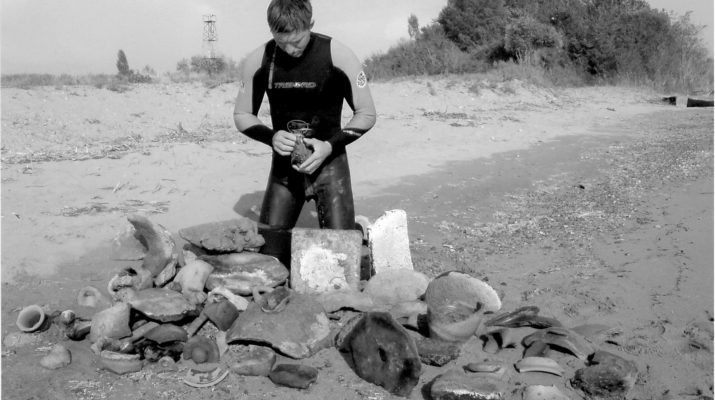The first research into the underwater antiquities of Issyk-Kul Lake took place in 1871 at the initiative of G.A. Kolpakovski, military governor of Semerechye. As a gift from the Kyrgyz people living on Issyk-Kul, he received two bronze bowls retrieved from the bottom of the lake. One had an Arab kufic ornament. Clearly the bowl and ornament were made during the Karakhanid period (eleventh-twelfth centuries).
The pioneer of modern scientific research into the underwater monuments and memorials of Issyk-Kul Lake using scuba diving was D.F. Vinnik of the History Institute of the Kyrgyz Republic Academy of Sciences, who first started diving with his students in 1959. Unfortunately such research was later suspended.
As the result of research that we resumed with Russian scientists in 1985, we identified more than 12 sunken remains of burial mounds and settlements. Across Issyk-Kul Lake, hundreds of ruins were discovered. They are the silent witnesses to two civilizations: ancient nomadic (first century BC) and medieval-agricultural.

